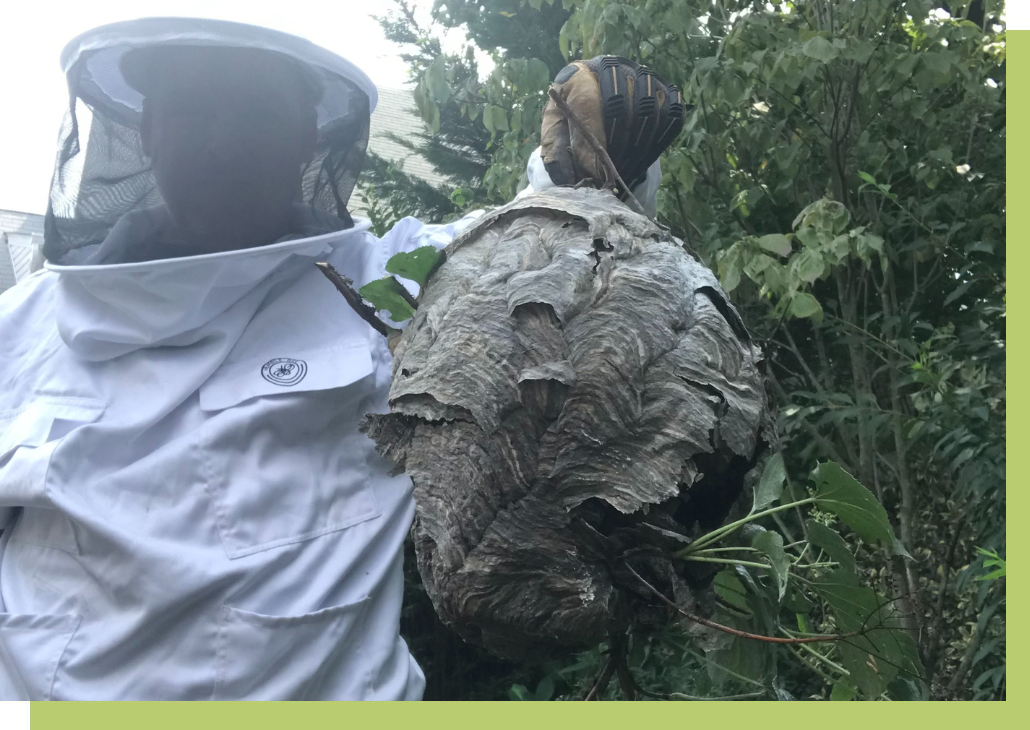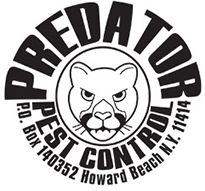Bees & Wasps
Bees & Wasps

Going the Extra Step
An Advance Termite Bait System can only be installed by a licensed pest management professional. The user must always read and follow label directions. © 2010 BASF Corporation. Advance, Puri-Cell, Quik-Lock and the Advance logo are registered trademarks of BASF Termite Inspections. A termite inspection on the approved state form is usually required during a real estate transaction when the buyer is getting a mortgage. To successfully complete this process, all Predator Pest Control termite inspections are performed on the approved bank, FHA & VA report form. A lender may require explaining a home’s termite activity on the wood-destroying organisms report (often referred to as the HUD 1 report, NPMCA 1 report, WDI report or WDO report). Our NYC exterminator will always go the extra step to assist the lender with any and all additional assistance and explanations needed.
Paper wasps can and will sting in defense of their nest, or when threatened. Unlike honey bees, which have barbed stings and can only sting once, paper wasps can sting multiple times. A paper wasp can call other colony members using alarm pheromones, chemical messages that tell other wasps to help defend the nest from a threat. Try to stay calm and avoid swatting at paper wasps.
Yellowjacket is the common name in North America for predatory wasps of the genera Vespula and Dolichovespula. Members of these genera are known simply as “wasps” in other English-speaking countries. Most of these are black and yellow; some are black and white (such as the bald-faced hornet, Dolichovespula maculata) while others may have the abdomen background color red instead of black. They can be identified by their distinctive markings, small size (similar to a honey bee), their occurrence only in colonies, and a characteristic, rapid, side to side flight pattern prior to landing. All females are capable of stinging. Yellowjackets are important predators of pest insects.
Cicada killers are large, female cicada killer wasps that are not aggressive and rarely sting unless they are grasped roughly, stepped upon with bare feet or caught in clothing, etc. One author who has been stung indicates that, for him, the stings are not much more than a “pinprick.” Males aggressively defend their perching areas on nesting sites against rival males but they have no sting. Although they appear to attack anything that moves near their territories, male cicada killers are actually investigating anything that might be a female cicada killer ready to mate. Such close inspection appears to many people to be an attack, but male and female cicada killers don’t land on people and attempt to sting. If handled roughly, females will sting, and males will jab with a sharp spine on the tip of their abdomen. Both sexes are well equipped to bite, as they have large jaws; however, they don’t appear to grasp human skin and bite. They are non-aggressive toward humans and usually fly away when swatted at, instead of attacking. Cicada killers exert a natural control on cicada populations and thus may directly benefit the deciduous trees upon which their cicada prey feed.
Carpenter bee is the common name for a group of mostly large, metallic-colored bees that construct nests in flower stalks or wood. There are about 730 species of carpenter bees. They live throughout the world wherever woody plants abound, especially in forested regions. Most species live in the tropics. Carpenter bees resemble bumble bees but do not have yellow markings. The females of most species are black or blue with a metallic sheen and may be up to 2.5 cm (1 in) long. In general, the males look like the females. In some species, the males are covered by light brown, light green, or yellowish-green hairs. Carpenter bees typically fly long distances and visit many kinds of flowers. When female carpenter bees construct tunnels in solid wood, their chewing of the wood can be heard from several feet away. Piles of sawdust beside the nest entrance and the presence of many bees in flight in the area provide clues that a nest is near.
Bald-faced hornet lives throughout North America, including southern Canada, the Rocky Mountains, the western coast of the United States, and most of the eastern U.S. They are most common in the southeastern United States. They are best known for their large football-shaped paper nest, which they build in the spring for raising their young. These nests can sometimes reach 3 feet tall. Bald-faced hornets are protective of their nests and will sting repeatedly if the nest is physically disturbed. They are more aggressive than both the wasps normally called yellowjackets and members of the Vespa genus, and it is not considered safe to approach the nest for observation purposes. The bald-faced hornet will aggressively attack with little provocation.
Our services extend to a wide variety of facilities:
- Hospitals
- Health care facilities
- Nursing homes
- Day care facilities
- Schools
- Office Buildings
- Hair salons, Barber shops & Nail salons
- Supermarkets, Restaurants & Bars
- Industrial properties, Food processing plants, Warehouses & Storage facilities
- All commercial properties
Ready to Get Started?
Call or email us today and let our services speak for themselves.
